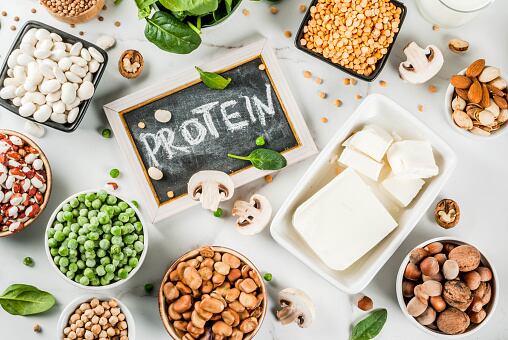A market leader in developing natural, functional proteins for food manufacture, Nandi Proteins is working on a diverse slate of projects, some of which limit artificial additives, while others improve shelf life or nutrition.
One of these endeavours investigates whether the collagen used to make sausage skins could replace fat content in the actual sausage without changing the flavour profile. Another involves experimenting with whey to create a clean label alternative to certain emulsifiers (used to make products shelf stable or create consistent texture).
“I think consumers generally don’t like the look of additives on the back of packets, and even if they don’t have E numbers, they like to see things that they recognise,” according to Matthew Tilling, a test and process development scientist at Nandi Proteins.
“When you say ‘xanthan gum’ to a food technologist, that means something, but to most regular consumers, they have no idea what that means. It’s much nicer to be able to put on the back of a packet ‘contains milk protein’ – then a consumer can go, ‘Well, I understand milk and I understand protein.’”
Recently, Nandi was awarded funding by Coeliac UK and Innovate UK to create plant-based proteins derived from faba beans, naked oats and rapeseed cake.
These will be used in gluten-free bread to replace the E number additives and ingredients derived from egg and dairy sources that are often needed to give a loaf the taste and texture consumers expect.
“There is a wider opportunity across the food industry to make a greater use of vegetable protein than has been the case so far,” Neil Crabb, chairman of Nandi Proteins, tells Food Spark.
“You are seeing it as an area where people are investing, it is clearly a growth category, but there are some existing constraints in the use of vegetable proteins that haven’t been correctly treated or formulated to get the performance that you want.”
It's not easy going green
Dairy proteins have already been milked for development, but with a growing number of consumers trying to cut back on animal products – whether for health, environmental or animal welfare reasons – Nandi is banking on a profitable future in plant-based options.
“I think people will work quite hard just on substitution,” says Crabb. “Everywhere we see a dairy protein at the moment, people will be looking to see if they can replace it with a vegetable protein without compromising food quality. That is partly a consumer-driven issue, partly a cost-driven issue and partly to do with sustainability.”
The government’s health and regulatory stance is also forcing change. Companies that have signed up to the One You campaign, like Greggs and McDonald’s, have very limited scope for hitting the targets set out by the initiative. Apart from anything else, developing proteins from veg will get them out of this quandary, giving them more plant options and making the so-called traffic light system glow green.
Of course, it’s not as easy as snapping your fingers. The reason dairy proteins have previously proved popular is that they are less challenging to work with across various applications. The road to plant-powered products is strewn with failed NPD that never made it to market.
“If you want to replace whey protein with plant protein, you very quickly run up against a solubility challenge. Lots of whey-based shakes have got 50% protein; there are very few plant-based ones because they just can’t get much in before basically you’ve got sludge at the bottom of your drink and it starts to become very chalky,” explains Crabb. “If you make a bar, you’ve got something that’s like a brick rather than something that’s actually chewable.”
There is sometimes an expectation that a particular protein – say, pea – can be used as a standard ingredient in a whole range of products. Unfortunately, that’s not often the case, as the processes each item has to undergo before it reaches the supermarket can alter its structure.
“In general, what we’ve found is that people across the industry haven’t understood the variability that can be introduced into the end product by things like heat treatment for pasteurisation or spray drying,” says Crabb, adding that this becomes doubly problematic if the original product itself is also a natural ingredient.
Nandi aims to make proteins that are flexible and consistent enough to allow formulation in large-scale production processes. Ideally, the company wants to do that at a good price point, which is why they are targeting plant proteins that are already at our fingertips – crops like soy, for example, which are grown in huge amounts but are currently being redirected towards animal feed rather than human food.
“We don’t need to build entirely new protein supply chains to access many of these materials,” explains Tilling. “The chain is there, it just needs to be treated and functionalised in the right way to be used in food.”
This article was originally published on foodspark.com, a digital subscription service designed to inspire and inform innovation across the food industry.
For anyone needing to stay ahead of the culinary curve, Food Spark will offer immediate access to the emerging trends, ingredients, personalities and headwinds defining the future of food. Explore more content by visiting Food Spark or by requesting a demo: joinus@foodspark.com or 01293 610371.

